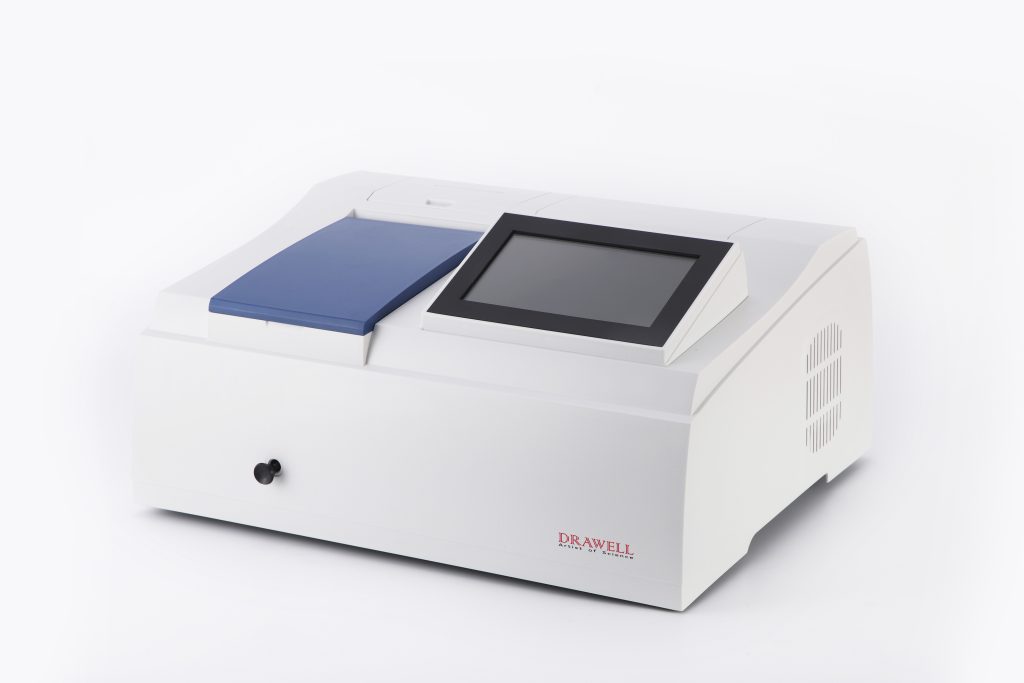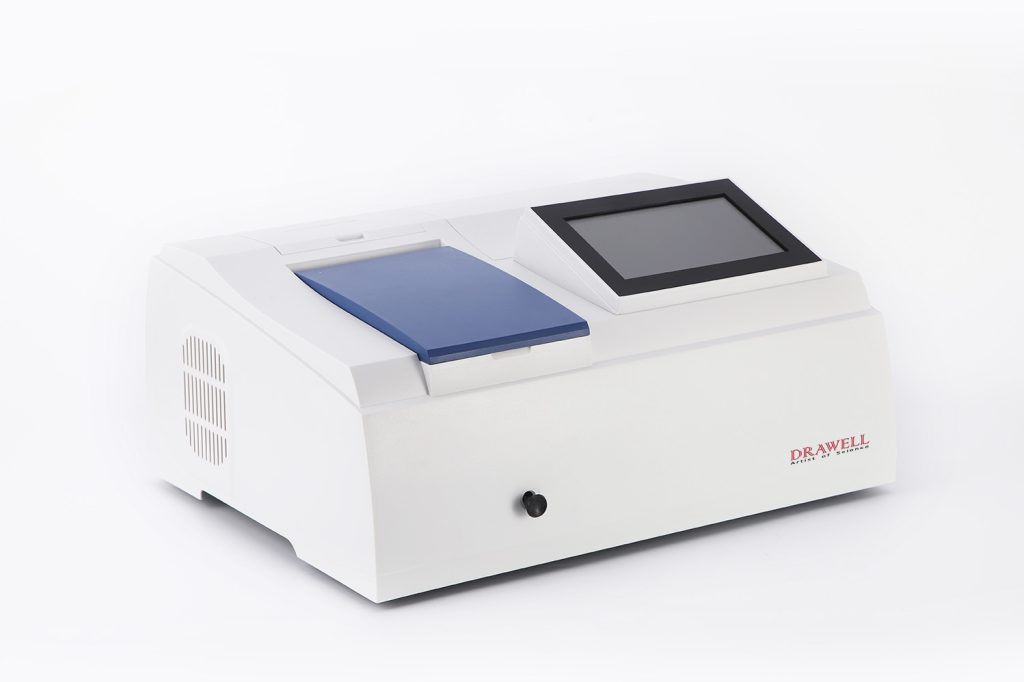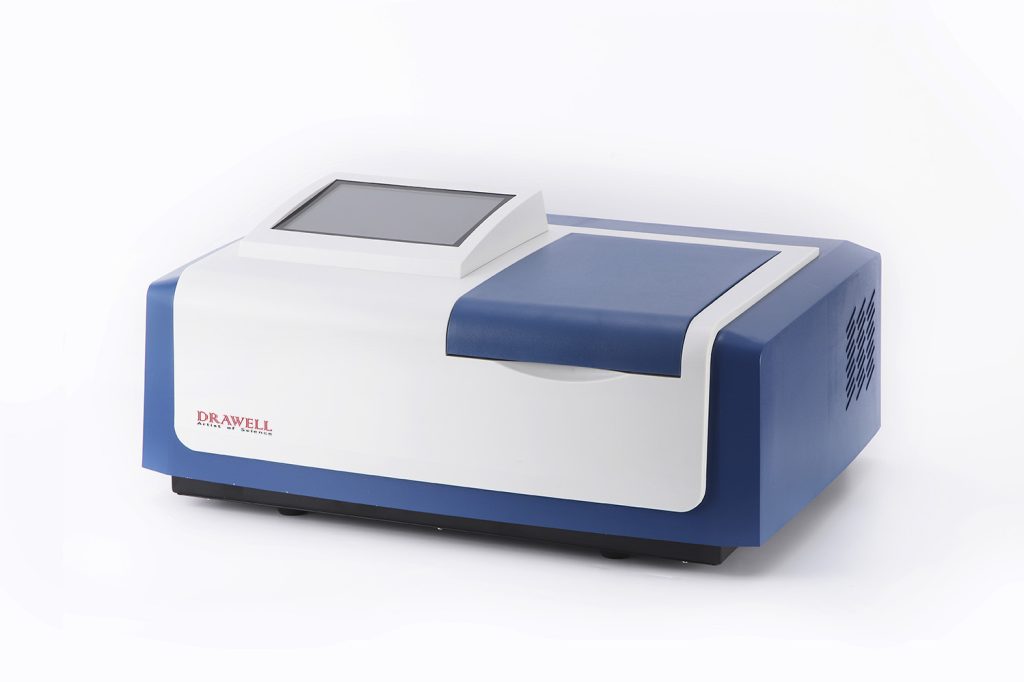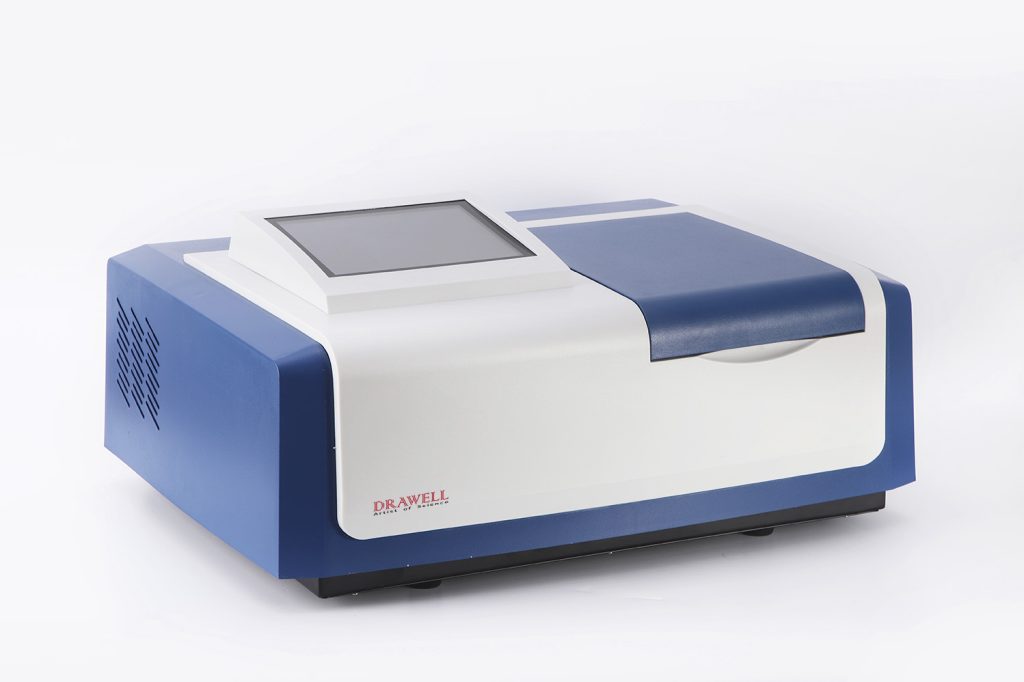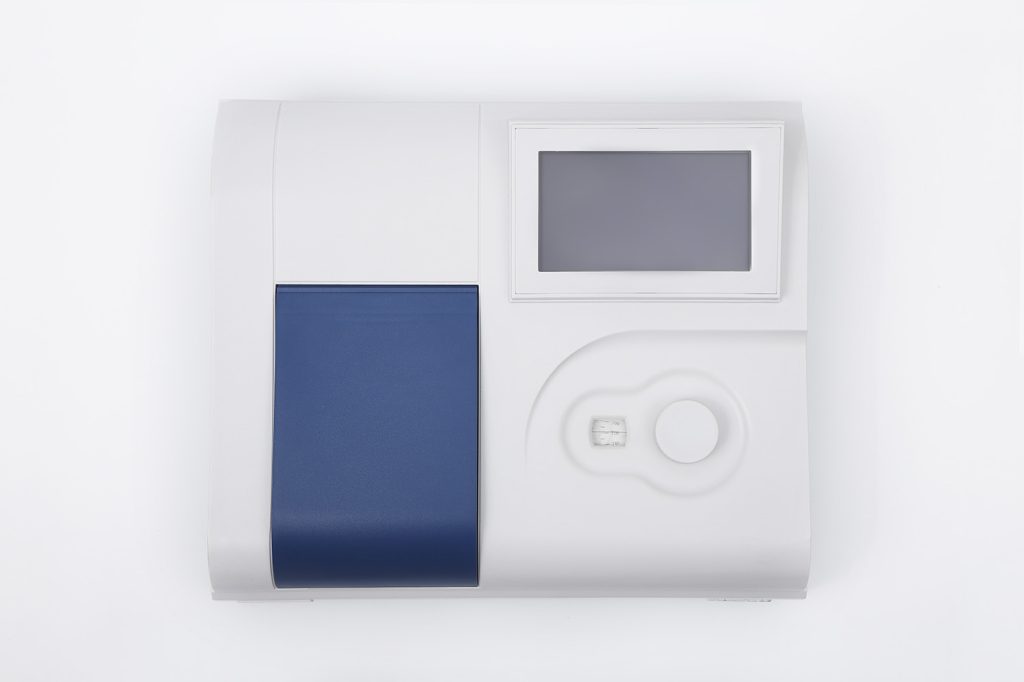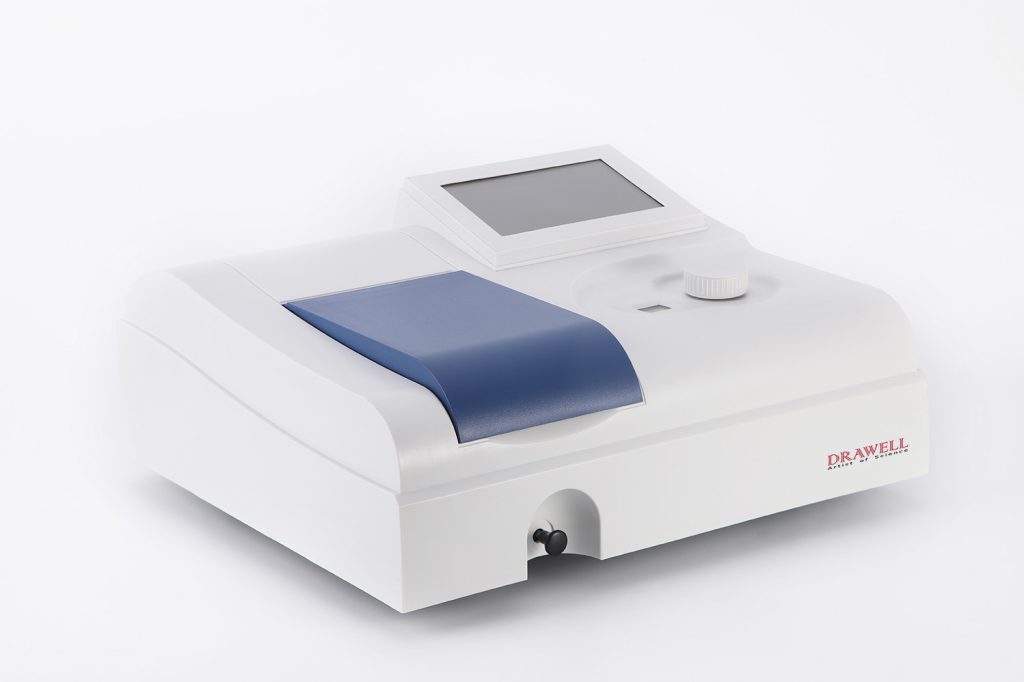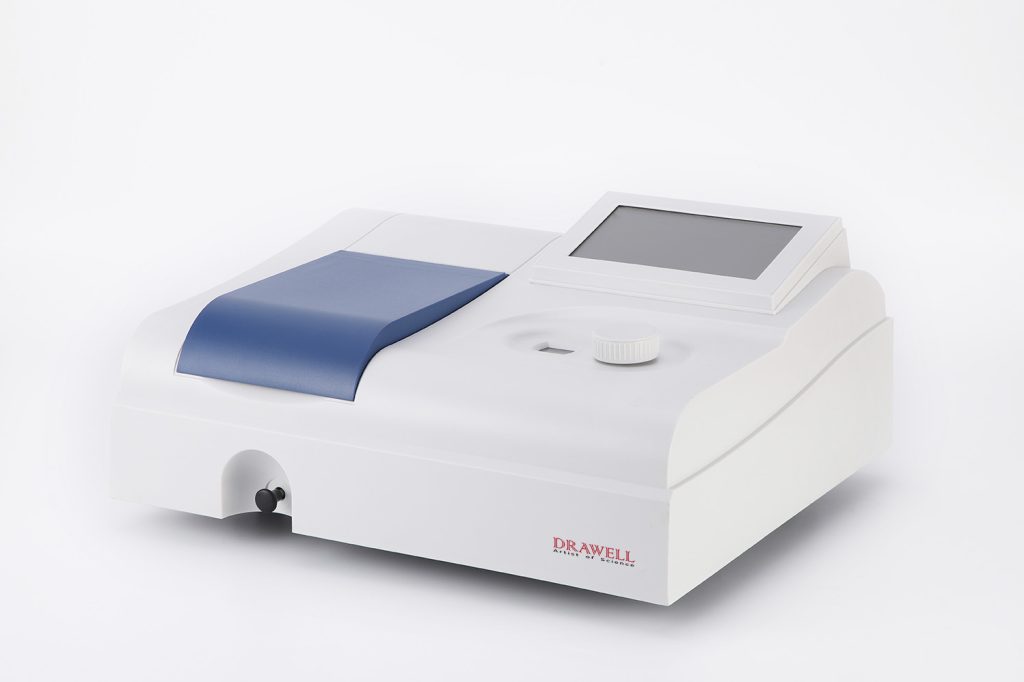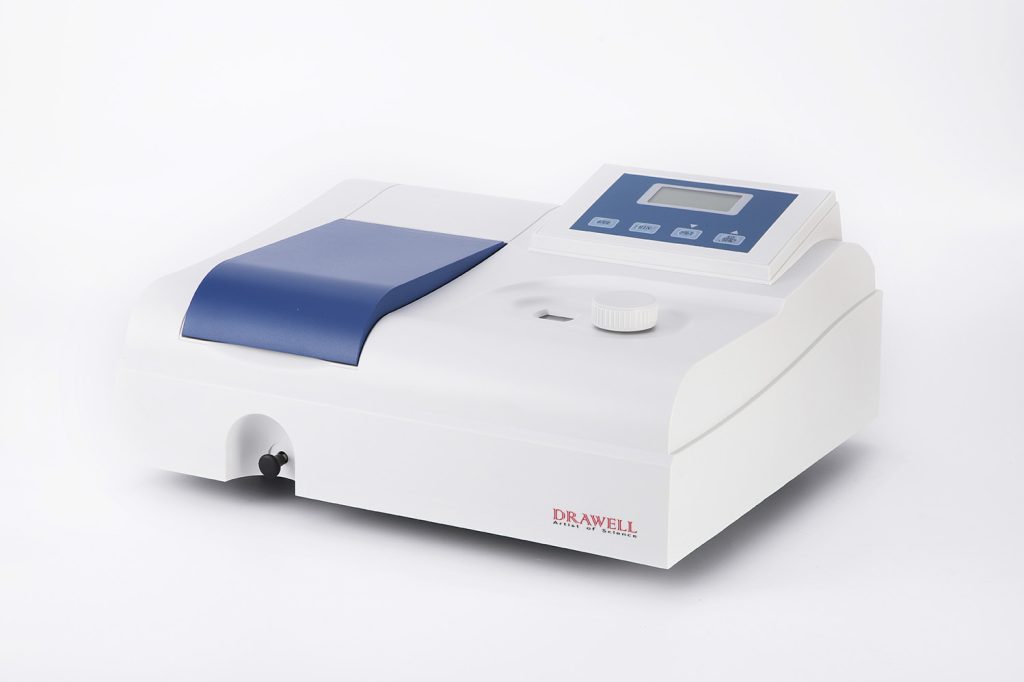The ultraviolet-visible spectrophotometer is a type of ultraviolet spectrophotometer. The UV vis spectrophotometer is an analytical instrument based on the principle of ultraviolet-visible spectrophotometry, which uses substance molecules to analyze the absorption of radiation in the ultraviolet-visible spectrum. It is mainly composed of the light source, monochromator, absorption cell, detector, and signal processor. The function of the light source is to provide a stable continuous spectrum of sufficient intensity.
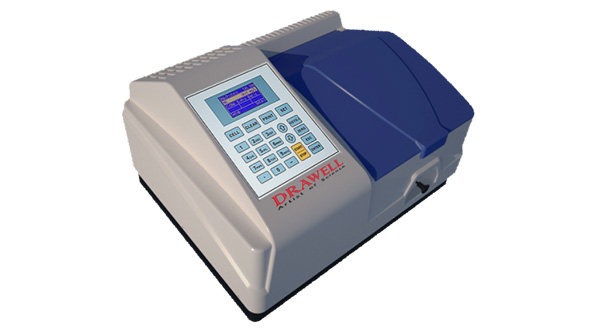
The ultraviolet light zone usually uses a hydrogen lamp or a deuterium lamp. The visible light zone usually uses a tungsten lamp or a halogen lamp.
The function of the monochromator is to decompose the composite light emitted by the light source and separate the monochromatic light of the required wavelength from it.
There are two types of dispersive elements: prism and grating. The measurement in the visible light region uses a glass absorption cell, and the measurement in the ultraviolet region requires a quartz absorption cell.
The function of the detector is to detect the intensity of the transmitted light through a photoelectric conversion element and convert the light signal into an electrical signal. Commonly used photoelectric conversion elements are phototubes, photomultiplier tubes, and photodiode array detectors.
There are many classification methods for spectrophotometers: According to the optical path system, it can be divided into single-beam ultraviolet-visible spectrophotometer and dual-beam ultraviolet-visible spectrophotometer; According to the measurement method, it can be divided into single-wavelength and dual-wavelength spectrophotometers; According to the detection method of drawing the spectrogram, it can be divided into spectrum scanning detection and the diode array full spectrum detection.
How does the UV-Vis spectrophotometer work?
The ultraviolet-visible absorption spectrum of the molecule is the absorption spectrum produced by the transition of the electronic energy level after some groups in the molecule absorb the ultraviolet-visible radiation.
In the analyte, since various substances have different molecules, atoms, and different molecular spatial structures, their absorption of light energy will not be the same. Spectrophotometric analysis is an effective method to study the composition, structure, and interaction of substances based on their absorption spectra. It is a band-shaped spectrum that reflects the information of certain groups in the molecule. The standard light spectrum can be combined with other means for qualitative analysis.
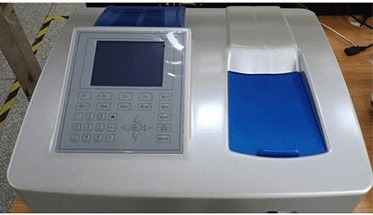
According to Lambert-Beer’s law, light absorption is proportional to the thickness of the absorption layer, and Beer’s law shows that light absorption is proportional to the solution concentration; if both the thickness of the absorption layer and the influence of the solution concentration on the light absorption rate are considered, Lambert- Beer’s law. That is, A=εbc, (A is the absorbance, ε is the molar absorption coefficient, b is the thickness of the liquid pool, and c is the concentration of the solution), then the solution can be quantitatively analyzed. The analysis sample and the standard sample are prepared in the same solvent at the same concentration, and the ultraviolet-visible absorption spectra are measured separately under the same conditions. If the two are the same substance, the spectra of the two should be the same. If there is no standard sample, it can also be compared with the ready-made standard spectrum control. This method requires the spectrophotometer to be accurate and precise, and the measurement conditions must be the same.
What is the structure and function of the UV-Vis spectrophotometer?
The UV-Vis spectrophotometer is composed of five parts: light source, monochromator, absorption cell, detector, and signal display system.
- Light source: It is a device that provides incident light that meets the requirements. There are two types of heat radiation light sources and gas-discharge light sources. Thermal radiation light sources are used in the visible light region, generally, tungsten lamps and tungsten halogen lamps, with a wavelength range of 350~1000nm; gas-discharge light sources are used in the ultraviolet region, generally hydrogen and deuterium lamps, with a continuous wavelength range of 180~360nm.
- Monochromator: The function is to decompose the composite light generated by the light source into monochromatic light and separate the required monochromatic light beam. It is the heart of the spectrophotometer.
- Absorption cell: It is also called a cuvette. It is used for measuring the absorbance of the test solution. Its bottom and two sides are ground glass, and the other two sides are optically transparent surfaces. To reduce the reflection loss of light, the optical surface of the absorption cell must be complete. Perpendicular to the beam direction. According to the material, it can be divided into glass cells and quartz cells. The former is used for the measurement of the visible light region, and the latter is used for the ultraviolet light region.
- Detector: It is a device that converts optical signals into electrical signals. When measuring absorbance, instead of directly measuring the intensity of light passing through the absorption cell, it converts the intensity of light into a current signal for testing. This photoelectric conversion device is called a detector.
- Signal display system: A device that amplifies the signal output by the detector and displays it.
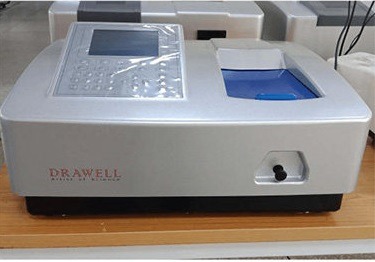
What are the characteristics and advantages of the UV vis spectrophotometer?
- High sensitivity.
- Good selectivity.
- High accuracy.
- Wide application.
- Use a wide range of concentrations.
- The analysis cost is low.
- Easy to operate.
- The analysis speed is fast.
Applications of UV-ViS Spectrophotometer
The UV-ViS spectrophotometer is a very important analytical instrument, and its two main functions are quantitative analysis and qualitative analysis. Whether in scientific research fields such as physics, chemistry, biology, medicine, materials science, and environmental science, or modern production and management departments such as chemical engineering, medicine, environmental testing, and metallurgy, UV-ViS spectrophotometers have a wide range and important application.

As an important laboratory instrument in the laboratory, how to choose a high-quality UV-Vis spectrometer is an important issue. I would like to recommend DRAWELL’s UV-ViS spectrophotometer to you. As a professional manufacturer of spectrometers, it can provide you with high-quality spectrometers. DRAWELL’s UV-Vis spectrophotometer can be divided into single beam spectrophotometer and double beam spectrophotometer according to the instrument structure and divided into visible spectrophotometer and ultraviolet spectrophotometer according to the wavelength and atmosphere of the absorbed light. If you need to know more about DRAWELL or UV-Vis Spectrometer, you are welcome to consult us, and our engineers will provide you with high-quality technical support.

